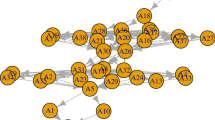Abstract
This paper focuses on the selection of the best tender in a public procurement process. This process involves different steps: the design of the tender process, the choice of tender selection methods, and scoring rules for evaluating tenders—the ex post control. Due to the interconnections between the rules on public contracts and those aimed to tackle corruption, the choice of tender selection methods and scoring rules for evaluating tenders assumes a crucial importance. The criterion usually used to select the best tender is the most economic advantageous tender (MEAT) based on the evaluation of technical requirements, on the one hand, and economic offer, on the other hand. First, this paper highlights some critical issues on the weighted sum method and some analytical formulas, commonly used to calculate the MEAT. Then, in order to apply a unique procedure and limit some risks of corruption and collusive agreements, it proposes to implement a unified group-AHP approach: In particular, a group-AHP model is applied for analyzing the qualitative component and another AHP model is used for the quantitative component.




Similar content being viewed by others
Explore related subjects
Discover the latest articles, news and stories from top researchers in related subjects.References
Aruldoss M, Lakshmi TM, Venkatesan VP (2013) A survey on multi criteria decision making methods and its applications. Am J Inf Syst 1(1):31–43
Bana-Costa CA, Corra EC, De Corte JM, Vansnick JC (2002) Facilitating bid evaluation in public call for tenders: a socio-technical approach. Omega 30:227–242
Diabagaté A, Azmani A, El Harzli M (2015) The choice of the best proposal in tendering with AHP method: case of procurement of IT master plan’s realization. Int J Inf Technol Comput Sci 12:1–11
Directive (2014) Directive 2014/24/EU on public procurement and repealing Directive 2004/18/EC, 26 February 2014, European Parliament and Council
Guidelines no. 2 of National Anti-Corruption Authority Council (2016) Implementation Act of Legislative Decree 18 April 2016, no. 50 bearing the ? Most Economically Advantageous Tender? Resolution no. 1005 of 21 September 2016
Ishizaka A, Nemery P (2013) Multi-criteria decision analysis methods and software. Wiley, Hoboken
Legislative Decree (2016) Legislative Decree no. 50 of April, 18, 2016, Implementation of Directives 2014/23/EU, 2014/24/EU and 2014/25/EU on the award of concession contracts, public contracts and procurement procedures by water, energy, transport and postal services, as well as for the reorganization of the current law on public contracts relating to works, services and supplies
Legislative Decree (2017) Legislative Decree no. 56 of April, 19, 2017, Supplementary and corrective provisions of legislative decree no. 50 of April, 18, 2016
Marcarelli G, Nappi A (2017) L’offerta economicamente piú vantaggiosa e l’utilizzo dei metodi multicriteriali nelle gare d’appalto pubblico. Amministrativ@mente, vol 7–8, pp 1–23
Marcarelli G, Nappi A (2019) Multicriteria approach to select the most economically advantageous tender: the application of AHP in Italian public procurement. J Public Procure 19:201–223
OECD (2010) Global forum on competition, roundtable on collusion and corruption in public procurement
Saaty TL (1986) Axiomatic foundation of the analytic hierarchy process. Manag Sci 32:841–855
Saaty TL (1994) How to make a decision: the analytic hierarchy process. Interfaces 24(6):41–42
Sciancalepore F, Falagario M, Cosentino N, Pietroforte R (2011) Multi-criteria bid evaluation of public projects. In: Proceedings of management and innovation for a sustainable built environment, 20–23 June 2011, Amsterdam, The Netherlands
Tsai H, Wang L, Lin L (2007) A study on improving the ranking procedure for determining the most advantageous tender. Constr Manag Econ 25:545–554
Tzeng GH, Yanga JL, Chiub HN, Yeh RH (2008) Vendor selection by integrated fuzzy MCDM techniques with independent and interdependent relationships. Inf Sci 178(21):4166–4183
Wang WC, Yu W, Yang I, Lin CC, Lee MT, Cheng YY (2013) Applying the AHP to support the best-value contractor selection-lessons learned from two case studies in Taiwan. J Civ Eng Manag 19(1):24–36
Author information
Authors and Affiliations
Corresponding author
Ethics declarations
Conflict of interest
The authors declare that they have no conflict of interest.
Human and animals rights
This article does not contain any studies with human participants or animals performed by any of the authors.
Informed consent
Informed consent was obtained from all individual participants included in the study.
Additional information
Communicated by M. Squillante.
Publisher's Note
Springer Nature remains neutral with regard to jurisdictional claims in published maps and institutional affiliations.
Rights and permissions
About this article
Cite this article
Marcarelli, G., Squillante, M. A group-AHP-based approach for selecting the best public tender. Soft Comput 24, 13717–13724 (2020). https://doi.org/10.1007/s00500-019-04479-1
Published:
Issue Date:
DOI: https://doi.org/10.1007/s00500-019-04479-1




